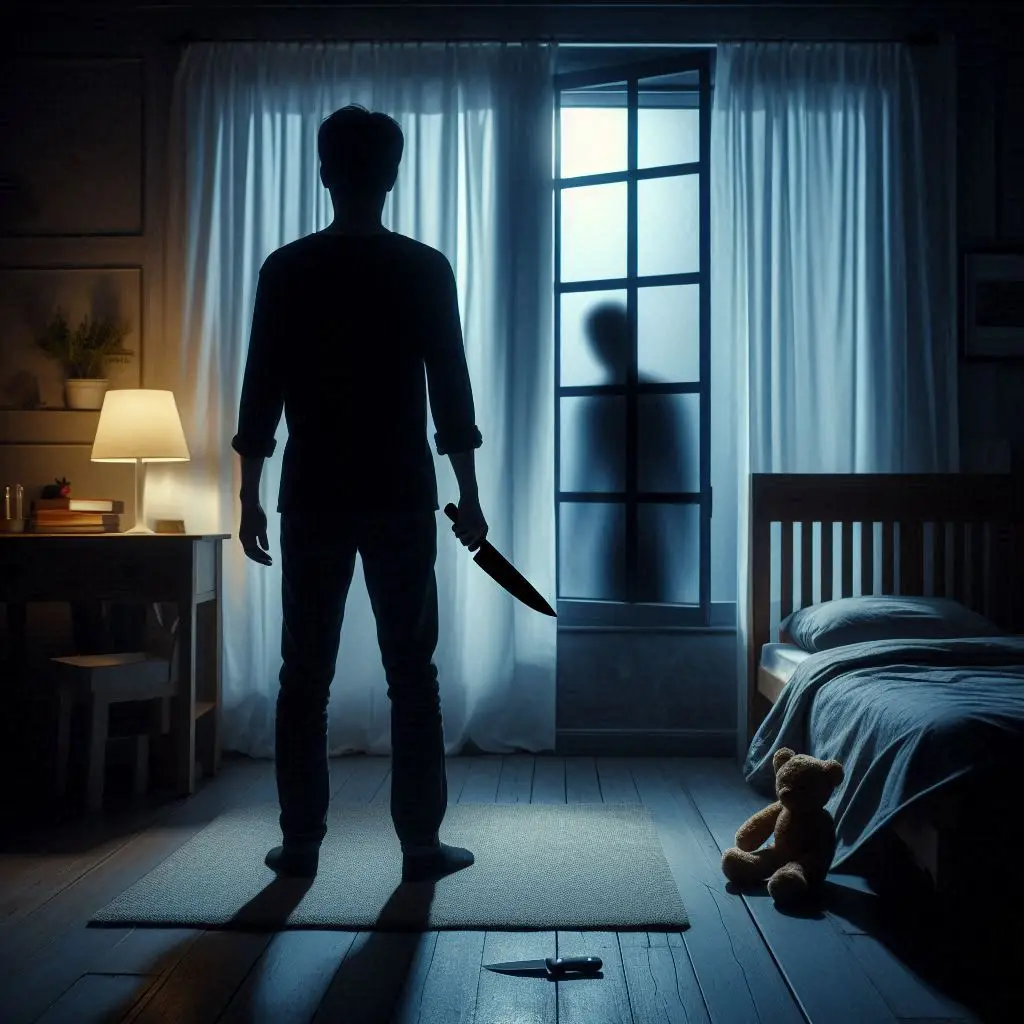Imagine it’s the middle of the night. You’re asleep in your own bed, safe in your family’s house. Then, without warning, you wake up to the feeling of cold metal pressed against your skin. A voice whispers in your ear: “Don’t make a sound. Come with me, or I’ll kill you.”
You’re fourteen years old.
What do you do?
That’s the exact nightmare that became real for Elizabeth Smart in 2002. She wasn’t taken from a dark alley, or a faraway city, or while traveling alone. She was kidnapped from the safest place imaginable—her own bedroom.
And what happened next would shock the world.
This is the strange, dark, and miraculous story of Elizabeth Smart, the girl who was stolen in the night but lived to tell the tale.
The Perfect Life
Elizabeth Ann Smart lived in Salt Lake City, Utah. By all accounts, her life looked ideal. She came from a large, loving family with six siblings. Her parents, Ed and Lois, raised them in a close-knit Mormon household.
Elizabeth herself was known as a sweet, talented girl. She played the harp beautifully, enjoyed school, and had dreams of performing professionally one day. She was fourteen years old in the summer of 2002, right on the edge of becoming a teenager with her whole life ahead of her.
Her family lived in a comfortable house on the east side of Salt Lake City, in a safe neighborhood where crime was almost unheard of. That sense of safety would be shattered forever on one June night.
June 5, 2002
It was the night of June 5, 2002. The Smart family went through their bedtime routine. Elizabeth and her younger sister Mary Katherine, nine years old, shared a bedroom. The lights went out. The house grew quiet.
Sometime around 2 a.m., Mary Katherine stirred awake. At first, she thought she was dreaming. She heard a man’s voice and the sound of footsteps. When her eyes adjusted, she saw a shadowy figure standing over Elizabeth’s bed.
The man whispered harshly, ordering Elizabeth to get up. He held a knife to her neck. Elizabeth obeyed, too terrified to scream. The intruder forced her out of bed and led her quietly out of the house.
Mary Katherine lay frozen, pretending to be asleep. She was terrified but managed to catch small details—the man’s voice, the faint outline of his face. After several minutes, the room was silent again. Elizabeth was gone.
The Family’s Worst Nightmare
At dawn, the Smart family discovered the horror. Elizabeth’s bed was empty. Her window was untouched. There was no sign of forced entry. She had simply vanished.
Panic set in immediately. Police were called. Neighbors were alerted. Within hours, the entire city of Salt Lake knew the story.
But investigators were faced with a chilling puzzle. How had a man entered a house full of people, taken a girl from her bed, and disappeared into the night without being seen or heard?
It was almost as if Elizabeth had been plucked out of reality.
The Suspects
In the early days of the investigation, police considered several suspects.
The first was Richard Ricci, a handyman who had worked for the Smart family. He had a criminal record, and suspicion quickly fell on him. The media hounded him relentlessly. But no evidence linked him to Elizabeth’s disappearance. Ricci later died in prison of a brain hemorrhage, still protesting his innocence.
Meanwhile, the Smart family clung to hope. They believed Elizabeth was still alive. But as days turned into weeks, and weeks into months, that hope grew thin.
The Hidden Captivity
While the world searched for her, Elizabeth was living a nightmare just a few miles away.
Her kidnapper was Brian David Mitchell, a self-proclaimed prophet who called himself Emmanuel. He had once done odd jobs at the Smart house and had been noticed by Elizabeth’s mother when she offered him food.
Mitchell wasn’t alone. He was joined by his wife, Wanda Barzee, a woman as disturbed and devoted as he was. Together, they dragged Elizabeth deep into the nearby mountains to a crude campsite hidden among the trees.
There, Mitchell announced that Elizabeth was now his “wife.” Over the next nine months, he subjected her to unimaginable abuse, controlled her every move, and forced her to live under his twisted religious delusions.
Elizabeth, once a girl who played harp recitals, was now chained in the wilderness, silenced by threats. Mitchell told her if she tried to escape, he would kill her and her family.
A Sister’s Memory
Back at home, Mary Katherine struggled with what she had seen. For weeks, she couldn’t recall who the man was. She was only nine, and trauma clouded her memory.
But one night, weeks after the kidnapping, she suddenly remembered. The voice, the face—it clicked.
The intruder was Brian David Mitchell.
She told her parents. They immediately informed police. But here’s where things got complicated: investigators were skeptical. Mitchell was seen as a fringe character, a homeless drifter. Some officers doubted a man like him could orchestrate such a kidnapping.
As a result, the tip wasn’t pursued aggressively at first. And for months, Elizabeth remained captive.
Life in Captivity
Mitchell forced Elizabeth to wear veils and robes that covered her face and body. He paraded her in public sometimes, yet people rarely questioned it because she looked so different from the missing girl’s photos.
He made her call him “Master.” He made her read from his bizarre religious writings. He convinced her that God had commanded him to take her.
And always, he reminded her: if she ran, her family would die.
Elizabeth lived each day under constant terror. But she also clung to something deep inside her—a determination to survive.
A Public Sighting
In March of 2003, nine months after her abduction, Mitchell grew bold. He brought Elizabeth and Barzee into Salt Lake City. They walked the streets, went into stores, even spoke with people. Elizabeth was disguised in a gray wig, sunglasses, and robes.
One couple noticed something strange. The girl looked young, but her companions controlled her closely. The couple reported it to police.
At first, the tip wasn’t taken seriously. But then another person recognized Mitchell from a “America’s Most Wanted” broadcast. Police finally moved in.
The Rescue
On March 12, 2003, police officers confronted Mitchell, Barzee, and the veiled girl walking near a suburban street in Sandy, Utah. They separated the trio and began asking questions.
The officers turned to the girl. She was hesitant. Terrified. For nine months, she had been told that revealing herself would mean death.
But finally, in a trembling voice, she admitted the truth.
“I’m Elizabeth Smart.”
The officers couldn’t believe it. After nine months, after endless speculation, after the world had almost given up hope—Elizabeth was alive.
The Return
When Elizabeth returned home, it was a miracle. Her family embraced her, crying, overwhelmed with relief. The city of Salt Lake erupted with joy. Across the country, people who had followed the case for months celebrated her survival.
But behind the joy was trauma. Elizabeth had lived through unimaginable abuse. She was only fourteen when she was taken, and fifteen when she was rescued. Her childhood had been ripped away.
Yet even then, her resilience was remarkable. Instead of letting her captors break her spirit, she decided to rebuild.
Justice
Brian David Mitchell and Wanda Barzee were arrested immediately. Barzee eventually pleaded guilty and served time before being released in 2018, a controversial decision that angered Elizabeth and her family.
Mitchell, however, faced a lengthy trial. In 2010, he was convicted of kidnapping and sexual assault. He was sentenced to life in prison, where he remains today.
Elizabeth herself testified bravely at the trial, describing the horrors she endured. Her courage helped put Mitchell away forever.
Life After
Elizabeth Smart refused to let her captors define her. She went on to finish her education, marry, and start a family of her own. She also became a national advocate for missing children and victims of abuse.
She founded the Elizabeth Smart Foundation, working to prevent child exploitation and help survivors heal. She has spoken publicly about her story, written books, and even hosted documentaries to spread awareness.
In doing so, she transformed her nightmare into a mission to protect others.
Why This Story Haunts
The Elizabeth Smart case terrifies people because it destroys our sense of safety. She wasn’t walking alone at night. She wasn’t in a dangerous neighborhood. She was asleep in her own bed, surrounded by family.
And yet, evil still found a way in.
It also shows the cruel cunning of predators. Mitchell disguised himself as harmless, used religion to manipulate, and controlled Elizabeth with fear. He knew how to vanish in plain sight.
But more than fear, Elizabeth’s story also shows something else: the power of survival. Even at fourteen, she endured months of horror without giving up. When the chance came, she found the strength to speak her name, and in that moment, she reclaimed her life.
Closing
Elizabeth Smart’s abduction was one of the most famous missing person cases of the early 2000s. It captured the nation’s attention, broke hearts, and then stunned the world with her survival.
Taken from her bed in the dead of night, forced to endure the unthinkable, Elizabeth emerged not just alive, but determined to live fully.
Her story is a chilling reminder that darkness can strike anywhere—even in our safest places. But it’s also proof that even in that darkness, resilience and courage can light the way home.
That is the strange, dark, and miraculous story of Elizabeth Smart: the girl who survived the impossible.




